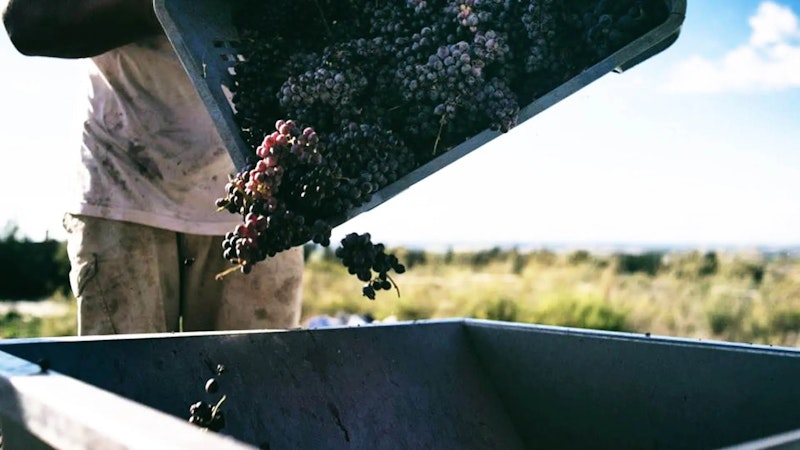Discover...Marche region
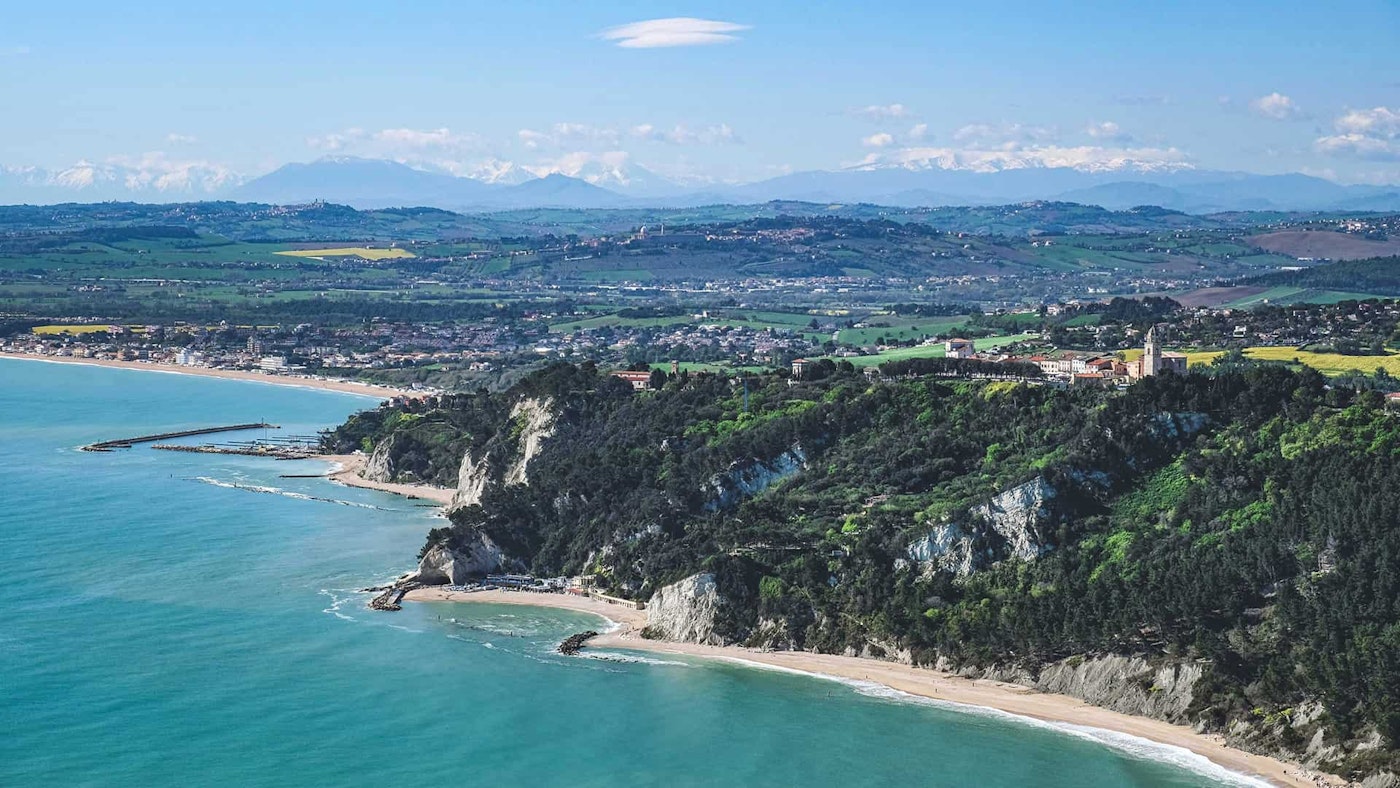
The Marche region produces about twenty types of wine, including DOC and DOCG: the reds, with their intense and fragrant tones, are perfect with grilled meat that smells of laurel, and the whites, with their fresh and fruity aromas, are perfect with seafood, first courses, soups or fish baked in foil, offering a wide choice to celebrate each dish with a perfect balance of flavours. The star is Verdicchio (in the double sense of Jesi and Matelica), the still white wine that has won the most awards in Italian wine guides over the last four years and one of the longest-lived white wines ever, an ambassador of excellence for regional production, flanked by DOC wines such as Bianchello del Metauro, Colli Maceratesi, Colli Pesaresi, Esino, Lacrima di Morro d'Alba, Pergola, Rosso Conero, San Ginesio, Serrapetrona; and DOCG Conero and Vernaccia di Serrapetrona.
LAND OF BORDERS AND GREAT WINES
The Marche region, a hinge between North and South, is a land of great wines and a wide variety of grape varieties to play with and enjoy in the glass. The presence of no less than 5 DOCG and 19 DOC wines is the most striking testimony to the diversity that this region has to offer, thanks also to a climate that is particularly favourable to vines, with breezes that blow from the sea inland along the sunny hills of the Marches, which stretch from Metauro to Tronto. The Syracusan Greeks, who not only founded Ancona but also established a flourishing maritime trade, brought viticulture to the area, but it was the Romans who established wine production and made the famous "Piceno" wine known throughout the Empire: from then on, the ancient wisdom of the peasants, the fruit of observation and experience in the field, acquired and sedimented by the succession of many generations, has been transferred to modern vineyard management.
There are about 20,000 hectares of vineyards in the Marche region, a third of which are dedicated to the production of DOC and DOCG wines: over 200 varieties are currently registered, with Sangiovese, Montepulciano, Verdicchio and Trebbiano Toscano taking the lion's share. In the area of Jesi there is the DOCG Castelli di Jesi Verdicchio Riserva and the DOC spill-over Verdicchio dei Castelli di Jesi. The province of Macerata is the land of DOCG Vernaccia di Serrapetrona and DOC Serrapetrona, made from black Vernaccia. The province of Ancona is home to Conero DOCG, made from Montepulciano grapes, while the Piceno area is home to Rosso Piceno DOC. The Camerina Valley includes the Matelica area, with Verdicchio di Matelica Riserva DOCG and Verdicchio di Matelica relapse DOC. Finally, the Pesaro area offers the Colli Pesaresi DOC, made with Sangiovese grapes for the red version. Finally, in the province of Ascoli Piceno, there are the Offida DOCG and the Falerio DOC.
Verdicchio and friends
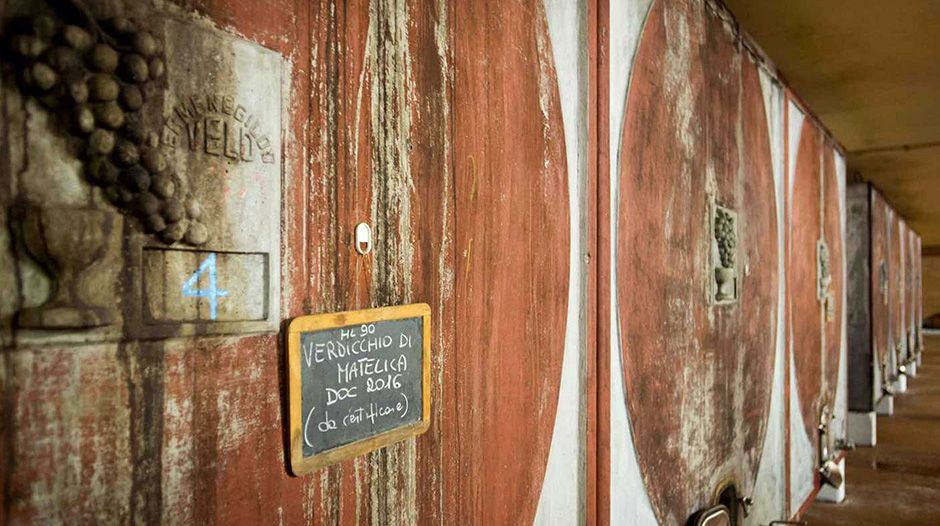
Among the great Italian white wines, Verdicchio - from Jesi and Matelica - is renowned for its unmistakable and rich personality and, above all, for its surprising versatility: from the delicate fruity aromas typical of young Verdicchio to the vegetal and mineral notes that continue to develop even ten years after the harvest in Verdicchio Riserva, the result of a maturation process that generally takes place in vats and/or steel tanks, and sometimes in large wooden barrels.
It is a wine that, as we have said, has two very different declinations: Verdicchio di Matelica differs from Verdicchio dei Castelli di Jesi firstly in terms of the area planted with vines (the former is ten times smaller than the latter); secondly in terms of climate, as the area of Matelica is the only one in the Marche region that runs parallel to the Adriatic coast and therefore enjoys a continental climate; lastly, the enclave of Matelica has, over time, produced a particular selection of Verdicchio vines that make it unique. The Riserva version, therefore, offers a white wine dressed in red, i.e. a wine with an important structure, expressing a more complex personality, the result of a selection of grapes from differentiated and particularly suitable micro-zones, where the harvest generally extends beyond the second half of October. It is only with time, with care and attention to its maturation, that Verdicchio di Matelica Riserva develops, first in the vats and then in the bottle, a complexity capable of producing a variety of flavours and aromas that give it a great longevity, which in great vintages can exceed twenty years of evolution.
On the red side, Rosso Conero (Montepulciano min. 85%, Sangiovese max. 15%) is the denomination that expresses the territoriality of Ancona, the capital of the Marche region. The production area is limited to the Monte Conero district, the only promontory on the Italian Adriatic coast between Trieste and Gargano. These unique environmental conditions give the wine a brilliant, deep, intense and impenetrable ruby red colour. In the Riserva version, it expresses its full potential with a minimum of 12 months in wood and 6 months in the bottle: the result is a wine of great calibre, capable of great ageing. Among the lesser known but highly prized denominations is 'Offida', DOC since 2001 and DOCG since 2011, named after an ancient town in the province of Ascoli Piceno, already famous for its historic carnival. The top wines are made from two indigenous white grape varieties, Passerina and Pecorino. Offida Passerina is a straw-yellow wine with golden reflections and typical aromas of tropical fruits, white flowers and broom. It should be drunk young, usually not later than the second year of its life, and is also available in sparkling and passito versions. In the past, farmers called this wine "cacciadebiti" or "pagadebiti" because of its high yield. Last but not least, Vernaccia di Serrapetrona, the first DOCG in the Marche, is available in both dry and sparkling versions. An oenological typology that holds a world record: it is the only one in the world to be obtained through three fermentations.
WINE AS BRAND DEVELOPMENT FOR MARCHE
The Istituto marchigiano di tutela vini (IMT), the maxi-consortium chaired by Antonio Centocanti and managed by Alberto Mazzoni, which has been promoting product quality as a distinctive element of the Marche brand for over 15 years, has as many as 472 member companies, 15 appellations, over 20 million euros invested in promotion from 2010 to date and a value of foreign sales that represents 82% of total exports. Founded in 1999 with 19 members and 7 protected appellations, IMT now promotes 15 of the 19 appellations in the Marche region and represents 45% of the regional vineyard area (over 8,000 hectares between the provinces of Ancona, Macerata, Pesaro-Urbino and Fermo). Teamwork between producers and with the territory, the ability to invest EU and regional funds, but also territorial identity and the valorisation of the variety as a distinctive trait of the Marche region are IMT's recipe for promoting Marche wine in Italy and around the world.
The Consorzio Vini Piceni (Cvp), founded in 2002 and currently made up of 50 members, is another reality for the protection and promotion of wine in the Marches: the soul of the Consorzio Vini Piceni lies in the mission it proposes to fulfil, both in Italy and abroad, which is to protect, promote and enhance the DOC and DOCG wines of the territory, checking that they are produced in compliance with the regulations. Above all, however, the Consorzio Vini Piceni aims to inform and involve consumers: quality production can only be fully appreciated in the presence of an informed consumer. The passion that its members put into their work is aimed at promoting the authenticity of Piceno wines in all their nuances.
A few years ago, on the occasion of the 50th anniversary of the two most representative DOC wines of the region (Rosso Piceno and Verdicchio dei Castelli di Jesi), the Marche Institute for the Protection of Wines and the Consortium of Piceno Wines, the two wine consortia of the Marches, which together represent more than 85% of the vineyards of the Marches, decided to create a common brand, starting from the most important trade fairs in the sector and ending with promotional activities. A strategy that is unprecedented among Italian wineries and that is also reflected in the joint membership of Food Brand Marche, the brand of the regional multi-brand association that brings together about 55% of the Marche agri-food industry.
MAIN WINES
Verdicchio dei Castelli di Jesi Doc
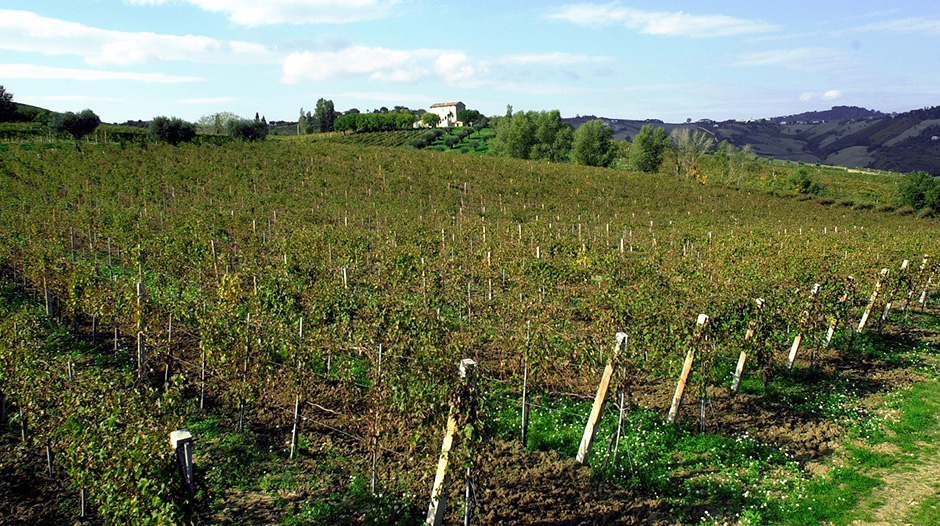
Produced in the provinces of Macerata and Ancona, in 22 municipalities historically known as "castles" because of the political and economic importance of Jesi, which gave birth to Frederick II of Swabia in 1194. It is produced with at least 85% Verdicchio grapes. Straw yellow in colour, it has a bouquet of hawthorn and wild flowers, fruity with hints of apple and peach and some citrus fruit. The palate is characterised by a typical bitter almond finish and interesting mineral and spicy notes.
Verdicchio di Matelica Doc
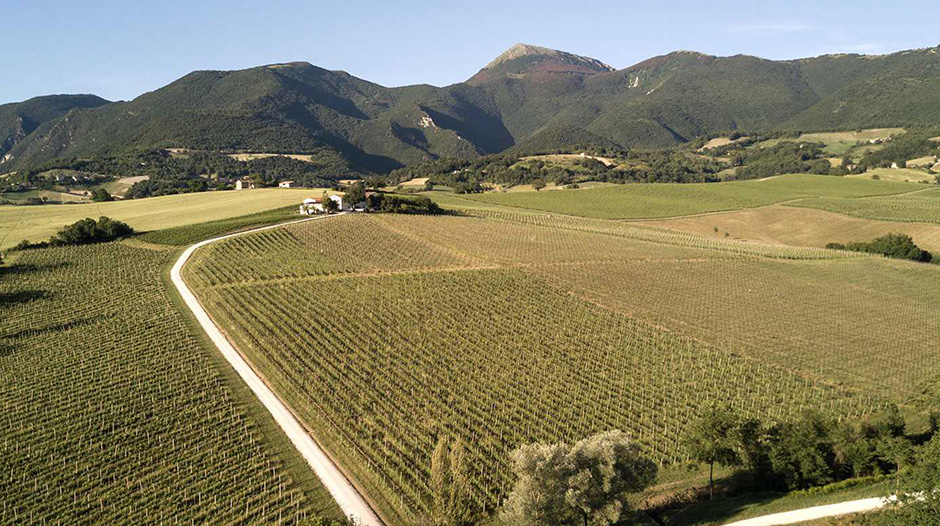
It is produced in six municipalities in the province of Macerata and two in the province of Ancona, in an area far from the sea. It is a wine with great structure and good aromas thanks to the continental climate. Its colour is straw yellow with unmistakable greenish reflections. In the mouth it is dry, persistent, with hints of ripe fruit, soft, round and with an almond finish, typical of Verdicchio in general.
Conero Docg
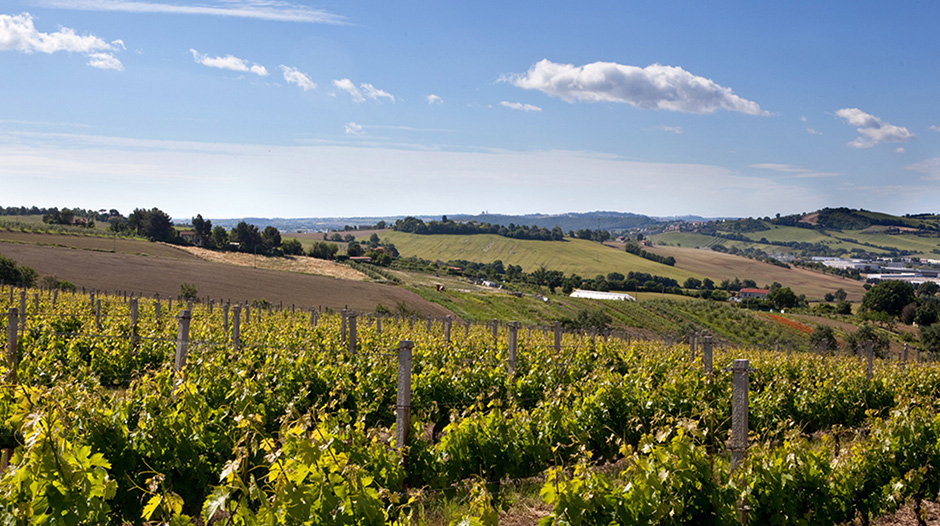
This is the "evolution" of the Rosso Conero Doc Riserva, which, since 2004, has changed its name and specifications in order to further enhance the quality of a wine produced in the municipalities of Ancona, Offagna, Camerano, Sirolo, Numana and part of the territory of the municipalities of Castelfidardo and Osimo in the province of Ancona. It has an intense ruby red colour, a fruity bouquet with spicy notes and a dry, spicy, tannic and full-bodied taste. It must be aged in wood for at least two years before being released on the market.
Rosso Piceno Doc
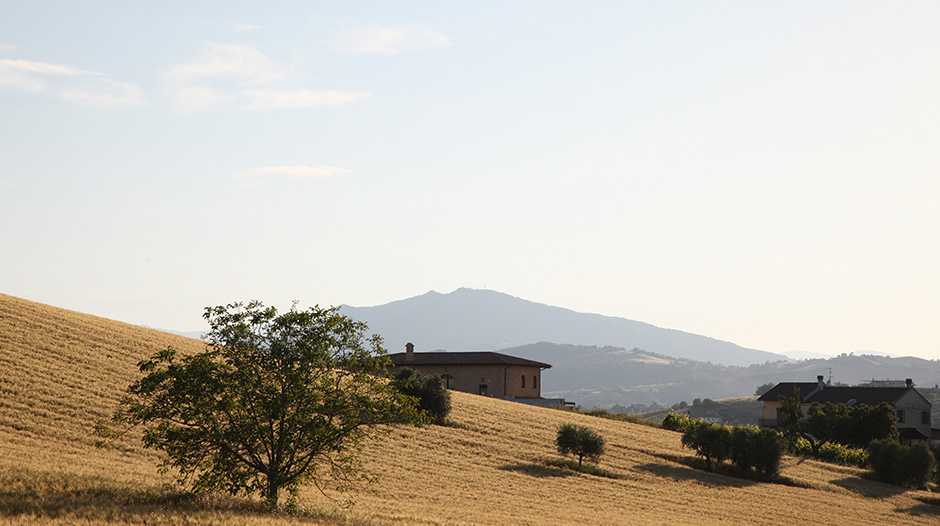
The production area is bounded to the north by the Metauro River and to the south by the Tronto River. Four types of red wine are produced: Rosso Piceno, Rosso Piceno Novello, Rosso Piceno Sangiovese and Rosso Piceno Superiore. In general, these are wines with an intense ruby red colour and red fruit aromas, while in the mouth they are harmonious, balanced and persistent.





